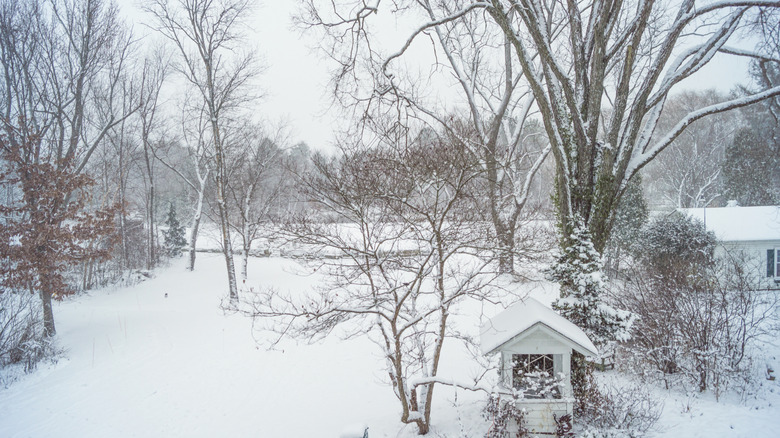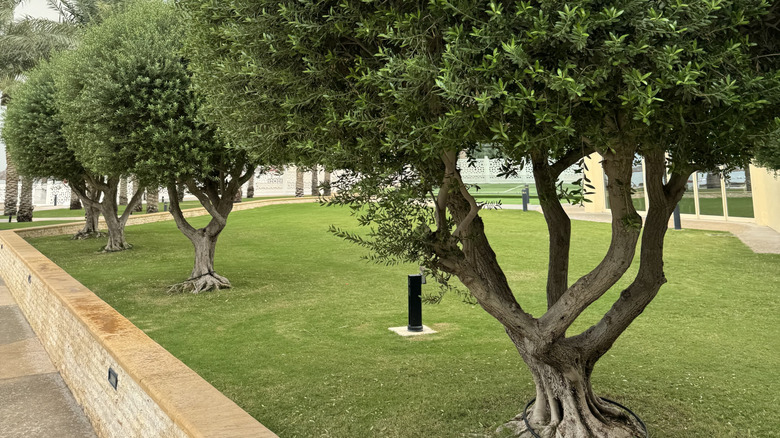Plant This Flowering Tree In Your Garden To Liven Up Your Winter Landscape
Let's face it — the majority of people in the U.S. aren't able to enjoy colorful landscapes year-round. By the time winter gets into full swing, many trees have dropped their leaves, and flowers are a distant memory. But that doesn't mean you can't enjoy a backyard winter wonderland. The chaste tree (Vitex agnus-castus) manages to provide visual interest even during dormant season.
The chaste tree is native to Europe and Asia and is a member of the mint family, though you might not be able to tell until you get a whiff of its leaves and flowers, which smell herbal and spicy – similar to sage. This plant can grow as either a shrub or a tree, with heights ranging from a few feet up to 30, depending on the cultivar and how it's grown. In USDA zones 5 and 6, the chaste tree will die back in winter, then regrow in spring. But in zones 7 and 8, the tree is fully cold-hardy. With its branching gray trunks, it's worth adding to your winter garden.
The chaste tree has year-round appeal
The chaste tree adds structure, texture, and height to your winter garden, even without its leaves and flowers. It has an ornamental trunk, with most individuals growing multiple trunks unless trained to do otherwise. They're smooth and a lighter tan color when young, but blocky, fissured, and dark gray when mature. The branches droop down, and the tree tends to spread out and grow in an open, rounded shape. Heights vary among cultivars, but there are many medium-height varieties available that can fill in the gaps between shorter shrubs and taller trees. For example, 'Shoal Creek' grows to 10 to 15 feet tall, while 'Rosa Ann' grows to 8 to 15 feet tall.
This small tree loves full sun and well-draining soil on the dry side. It needs regular pruning to maintain a neat appearance. Note that the chaste tree self-seeds, so it can become weedy and overwhelm your garden if not kept in check. During other seasons aside from winter, the chaste tree has more benefits: in spring and summer, it blooms unique spikes of flowers in pink, blue, lavender, or white, depending on the cultivar. It attracts bees, butterflies, birds, and other pollinators. It's also resistant to deer damage as well as most insect pests and diseases, and is also drought-tolerant.

